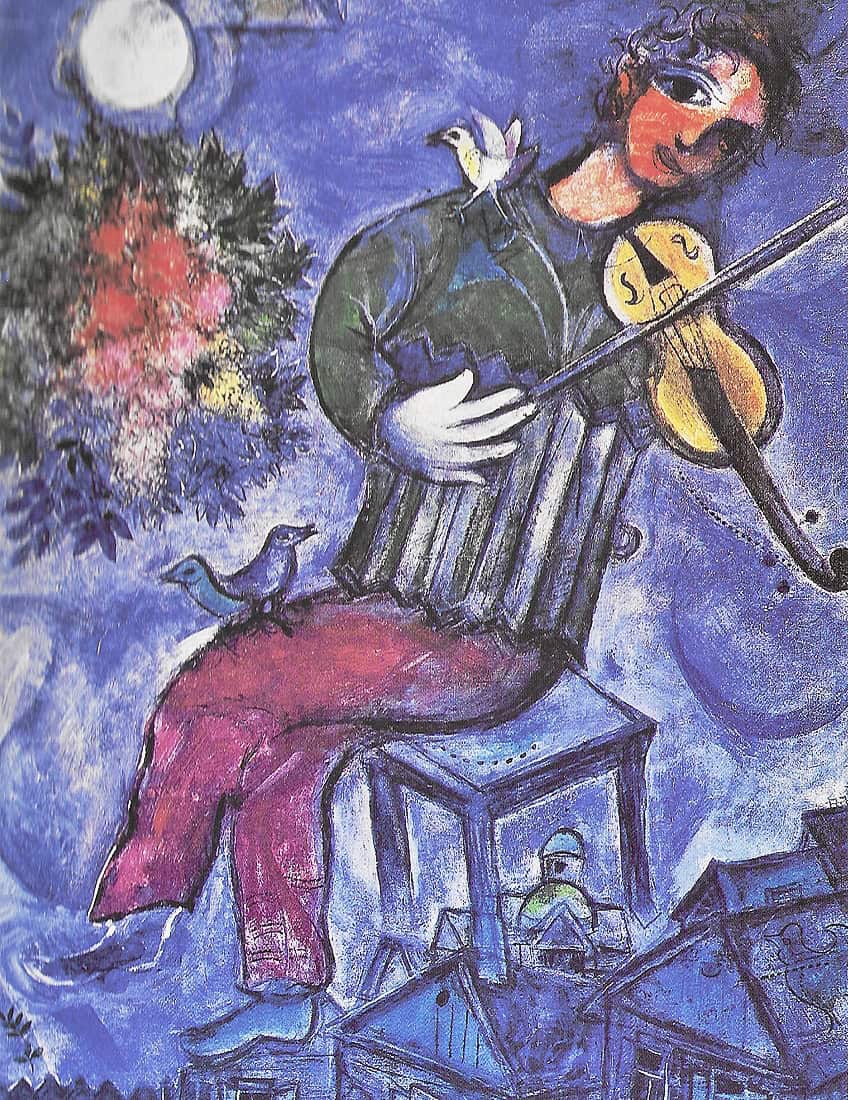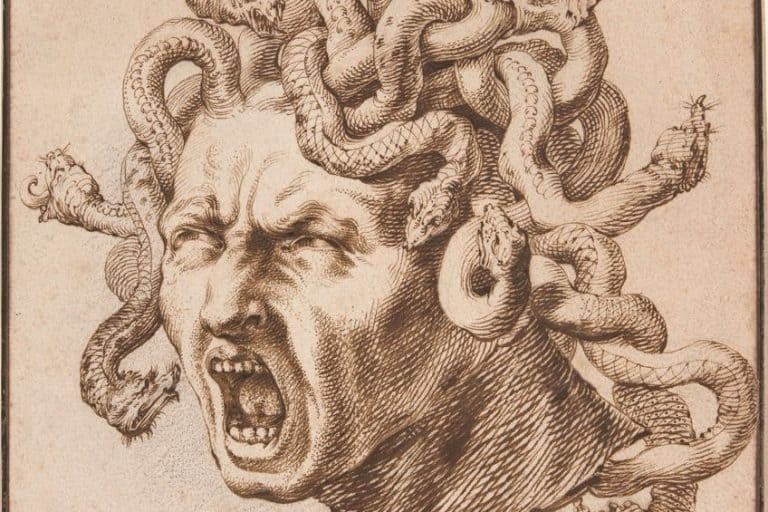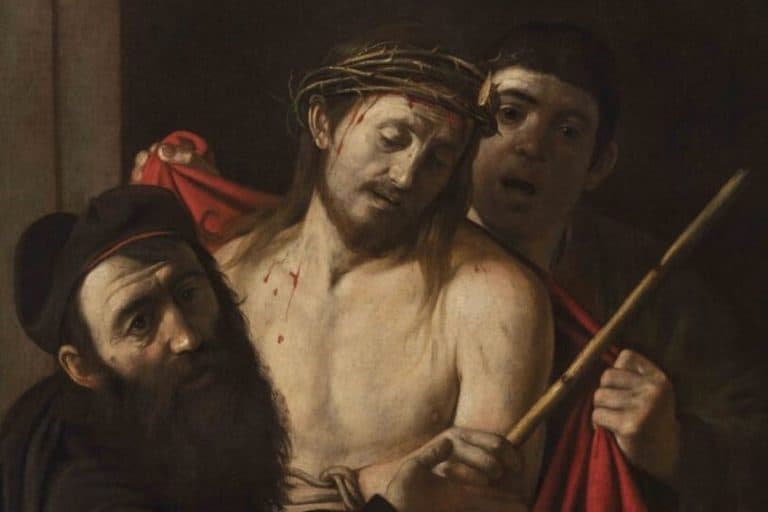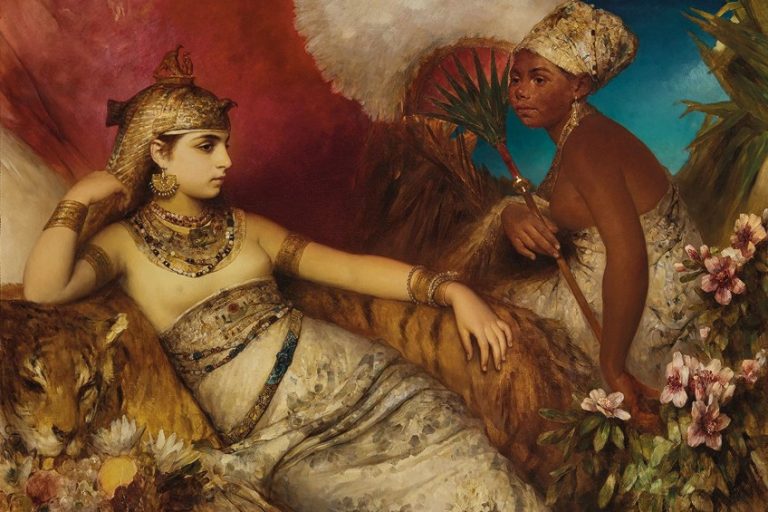“Green Violinist” by Marc Chagall – A Musical Masterpiece
Marc Chagall’s Green Violinist is a captivating piece of art that seamlessly blends vibrant color, dreamlike imagery, and a deep connection to Jewish cultural heritage. Painted between 1923 and 1924, the work reflects Chagall’s unique style, where fantastical elements and folkloric motifs converge to tell a poignant story. The green violinist, hovering above a quaint village, symbolizes the enduring spirit of music and tradition amidst the ever-changing landscape of early 20th-century Europe. This painting not only highlights Chagall’s mastery of color and composition but also serves as a testament to his ability to convey profound themes through whimsical, surrealistic forms.
Key Takeaways
- Green Violinist is a painting by Marc Chagall that depicts a fiddler floating or dancing above the rooftops of a gray village.
- Chagall’s unique style combines his cultural and religious heritage with his avant-garde artistic training.
- The painting has been interpreted in a number of ways and remains a beloved piece of art.
Historical Context and Significance
| Artist | Marc Chagall (1887 – 1985) |
|---|---|
| Date Created | 1923 – 1924 |
| Medium | Oil on canvas |
| Genre | Surrealism |
| Period/Movement | Modernism |
| Dimensions (cm) | 197.5 × 108.6 |
| Series/Versions | Single version |
| Where Is It Housed? | Solomon R. Guggenheim Museum, New York City, United States |
| What It Is Worth | Estimated value in millions; varies based on market demand |
Green Violinist is a painting by Russian-French artist Marc Chagall, created between 1923 and 1924. The painting depicts a fiddler floating or dancing above the smaller rooftops of a gray village. The painting is part of the permanent collection of the Solomon R. Guggenheim Museum in New York City. Chagall was a pioneer of modern art and a major contributor to the development of Surrealism. He was known for his use of vibrant colors and dreamlike imagery in his art.

Green Violinist is a prime example of Chagall’s unique style, as it combines his cultural and religious heritage with his avant-garde artistic training. The painting has been interpreted in a number of ways, with some seeing it as a celebration of the tension between change and continuity, while others see it as a representation of the material and spiritual elements of our lives.
Regardless of its interpretation, Green Violinist remains a beloved piece of art that continues to captivate viewers to this day.
The Green Violinist and Jewish Heritage
Marc Chagall’s Green Violinist is a painting that reflects the artist’s Jewish heritage and his personal experiences. Chagall was born in Vitebsk, Russia, in 1887, a city with a large Jewish population. His upbringing in a traditional Jewish family and his exposure to the cultural and religious traditions of Eastern Europe had a profound impact on his art.
In Green Violinist, Chagall depicts a fiddler suspended in mid-air, playing his instrument under a vibrant green sky. The fiddler, a common figure in Jewish folklore and music, represents the spiritual and cultural heritage of the Jewish people. The green color of the sky, which dominates the painting, suggests the hope and optimism associated with the Jewish faith.
Influence of Cubism and Avant-Garde Styles
Chagall was also influenced by the avant-garde styles of his time, particularly Cubism. He moved to Paris in 1910 and was exposed to the works of Pablo Picasso and Georges Braque, among others. The influence of Cubism is evident in Green Violinist, which features fragmented forms and multiple perspectives. However, Chagall’s use of Cubist elements is not purely formalistic. Rather, he uses them to express his personal vision and his cultural heritage.
The combination of Cubist forms and Jewish themes in Green Violinist is a unique and innovative approach that reflects Chagall’s status as a Russian-French artist.
In conclusion, Green Violinist is a significant work in the oeuvre of Marc Chagall. It reflects the artist’s personal experiences, his Jewish heritage, and his experimentation with avant-garde styles. The painting is a testament to Chagall’s ability to combine diverse influences and create a unique and innovative artistic vision.
Artistic Elements and Style
The artistic elements and style in Marc Chagall’s Green Violinist showcase a harmonious blend of vibrant colors, surreal imagery, and symbolic motifs. Chagall’s unique use of bold hues, whimsical figures, and dreamlike settings creates a captivating narrative that reflects his deep connection to Jewish culture and folklore. This section delves into the intricate details of Chagall’s artistic choices, highlighting how they contribute to the overall enchanting aura of Green Violinist.
Color and Symbolism
Marc Chagall’s Green Violinist is a masterpiece of color and symbolism. The painting features a geometrically-inspired man in vibrant secondary colors playing a green violin against a bland backdrop of grey, brown, and black. The green color of the violinist’s coat symbolizes hope, renewal, and growth, while the purple hat and coat represent royalty and wealth.
The painting’s use of color and symbolism is a hallmark of Chagall’s unique style, which combines his cultural and religious heritage with the avant-garde artistic training he received during his time in Paris.
Perspective and Surrealism
Chagall’s use of perspective and surrealism is another defining characteristic of his work. In Green Violinist, the fiddler appears to be floating or dancing above the much smaller rooftops of the misty gray village below. This use of perspective creates a dreamlike atmosphere that is enhanced by the painting’s surreal elements, such as the fantastical violin and the swirling hues of the background. Chagall’s incorporation of these elements creates a sense of whimsy and enchantment that define his oeuvre.

Recurring Motifs in Chagall’s Work
Chagall’s work is also notable for its recurring motifs, which include angels, animals, and lovers. These motifs are often depicted in surreal and fantastical ways, such as the green-faced violinist in Green Violinist. Chagall’s use of these motifs is a reflection of his imagination and his desire to create a world that is both familiar and magical.
His work has been compared to that of Picasso, but Chagall’s use of color, symbolism, perspective, and surrealism sets him apart as a unique and innovative artist.
Cultural Impact and Legacy
Chagall’s fusion of personal symbolism with universal themes has resonated with audiences globally, making Green Violinist a symbol of artistic innovation and cultural richness. This section explores how Chagall’s masterpiece continues to inspire artists and viewers alike, shaping the conversation around surrealism, Jewish identity, and the enduring power of imagination in art.

The Green Violinist‘s Influence on Music and Theater
Marc Chagall’s Green Violinist has had a lasting impact on the world of music and theater. The painting’s whimsical and surreal depiction of a violinist has inspired numerous musical compositions and stage productions. One of the most famous examples is the musical Fiddler on the Roof, which premiered on Broadway in 1964.
The show’s iconic poster, featuring a fiddler on a rooftop, is a clear homage to Chagall’s Green Violinist.
Chagall’s art has also been featured in productions by the Moscow State Jewish Theatre, which was founded in 1919. The theater’s productions often featured Chagall’s paintings as backdrops, creating a unique and immersive experience for audiences.
Chagall’s Art in Museum Collections
Several of Chagall’s works, including Green Violinist, are held in museum collections around the world. The Guggenheim Museum in New York City has a significant collection of Chagall’s art, including I and the Village, Over the Town, and White Crucifixion. The museum’s collection also includes several of Chagall’s sketches and studies, providing insight into his creative process. Chagall’s art has also been featured in exhibitions at museums around the world, including the Tate Modern in London and the Centre Pompidou in Paris.

These exhibitions have helped to introduce Chagall’s work to new audiences and solidify his place in the canon of modern art. Overall, Chagall’s Green Violinist has had a profound impact on the worlds of art, music, and theater. Its whimsical and surreal depiction of a violinist has inspired countless artists and performers, and its place in museum collections ensures that it will continue to be appreciated for generations to come.
Green Violinist stands as a testament to the artist’s profound ability to blend memory, culture, and imagination into a single canvas. Through its vibrant hues and surreal composition, the painting captures the essence of Chagall’s Jewish heritage and the pervasive spirit of music as a source of joy and resilience. This work not only exemplifies Chagall’s distinctive artistic vision but also invites viewers to reflect on the enduring power of art to transcend time and place, evoking a sense of nostalgia and wonder that remains relevant to this day. Green Violinist continues to enchant audiences, solidifying its place as a cherished masterpiece in the realm of modern art.
Frequently Asked Questions
What Is the Significance of the Color Green Used for the Violinist in Chagall’s Painting?
The color green used for the violinist in Chagall’s painting is significant because it represents hope, renewal, and growth. Green is often associated with nature and the environment, and in this painting, it symbolizes the violinist’s connection to the spiritual and emotional world. The green color also adds to the surreal and dreamlike quality of the painting, which is characteristic of Chagall’s style.
How Does Green Violinist Reflect Marc Chagall’s Personal History and Experiences?
Green Violinist reflects Marc Chagall’s personal history and experiences in several ways. Chagall was born in a Jewish family in Belarus and moved to Paris in 1910. He was deeply influenced by the Jewish culture and traditions, which are reflected in his paintings, including Green Violinist. The painting also reflects Chagall’s interest in music, which he considered a universal language that transcends cultural and linguistic barriers.
What Artistic Movements Influenced Marc Chagall’s Style in Green Violinist?
Marc Chagall’s style in Green Violinist was influenced by several artistic movements, including Cubism, Fauvism, and Symbolism. Chagall’s use of bold colors and distorted forms is reminiscent of the Fauvist style, while his use of multiple perspectives and overlapping planes is characteristic of Cubism. The painting’s dreamlike quality and use of symbols are also influenced by Symbolism.
In What Ways Did Green Violinist Inspire the Musical Fiddler on the Roof?
Green Violinist inspired the musical Fiddler on the Roof in several ways. The painting’s depiction of a Jewish musician playing a violin in a surreal and dreamlike setting resonated with the musical’s themes of tradition, family, and identity. The musical’s composer, Jerry Bock, was also inspired by Chagall’s use of music as a universal language and incorporated traditional Jewish music into the show’s score.
Isabella studied at the University of Cape Town in South Africa and graduated with a Bachelor of Arts majoring in English Literature & Language and Psychology. Throughout her undergraduate years, she took Art History as an additional subject and absolutely loved it. Building on from her art history knowledge that began in high school, art has always been a particular area of fascination for her. From learning about artworks previously unknown to her, or sharpening her existing understanding of specific works, the ability to continue learning within this interesting sphere excites her greatly.
Her focal points of interest in art history encompass profiling specific artists and art movements, as it is these areas where she is able to really dig deep into the rich narrative of the art world. Additionally, she particularly enjoys exploring the different artistic styles of the 20th century, as well as the important impact that female artists have had on the development of art history.
Learn more about Isabella Meyer and the Art in Context Team.
Cite this Article
Isabella, Meyer, ““Green Violinist” by Marc Chagall – A Musical Masterpiece.” Art in Context. July 10, 2024. URL: https://artincontext.org/green-violinist-by-marc-chagall/
Meyer, I. (2024, 10 July). “Green Violinist” by Marc Chagall – A Musical Masterpiece. Art in Context. https://artincontext.org/green-violinist-by-marc-chagall/
Meyer, Isabella. ““Green Violinist” by Marc Chagall – A Musical Masterpiece.” Art in Context, July 10, 2024. https://artincontext.org/green-violinist-by-marc-chagall/.











